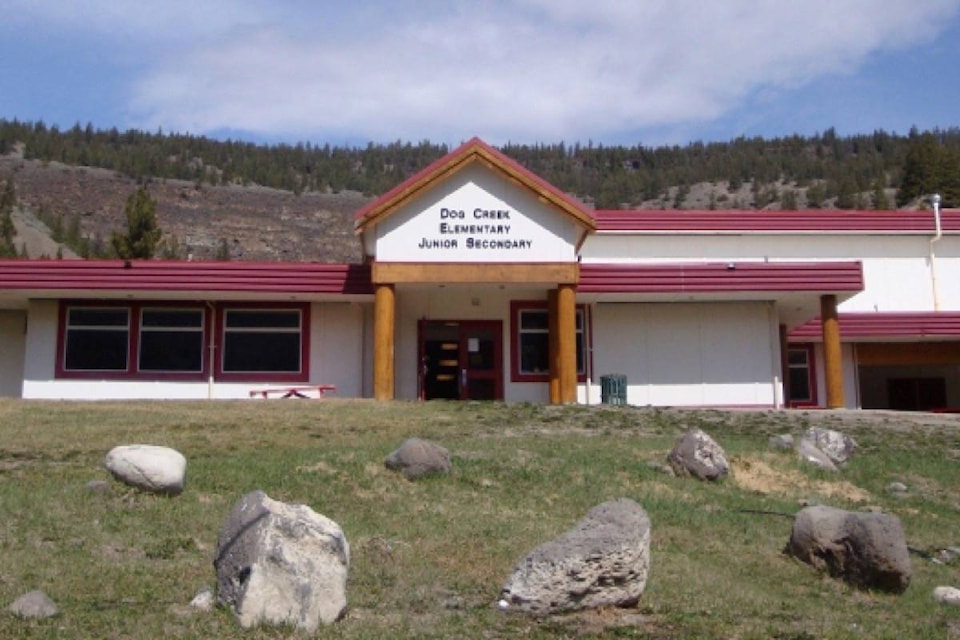Four small rural schools in School District 27 will be the focus of a consultation process in the coming weeks.
The move, initiated by board trustees, is an effort to receive additional funding called the Rural Education Enhancement fund for the four schools, which historically have had low numbers.
The schools that will be hosting consultations are Dog Creek Elementary/Junior Secondary, Lac la Hache Elementary, Likely Elementary and Big Lake Elementary.
While the rural education funding criteria is specifically for schools at risk of closure, board chair Tanya Guenther said that the board has not entertained any school closures at this point.
“There is funding available to support education through the rural education fund to support some of our rural schools and the board thought it was prudent for us to further apply for those funds. That is why we have entered into this consultation,” she said.
Read more: Province throws lifeline to closing rural schools
Applying for the funding, rather, is a proactive step, said Kevin Futcher, secretary treasurer of the school district.
“We’re in a position where we have had a shortfall again this year, and the board needs to investigate all avenues for additional funding to support our students,” said Guenther.
“The biggest thing is that this is not a school closure process,” said Holly Zurak, the principal of Big Lake Elementary. “We’re not being closed. It’s that the schools that they’ve identified have the risk factors for potential school closure in the future, which isn’t new news to any of the communities involved.”
The first consultation took place at Dog Creek Elementary/Junior Secondary on Feb. 1. The next consultations will take place at Lac la Hache Elementary at 5:30 p.m. on Feb. 5, Big Lake Elementary on Feb. 7 at 5 p.m. and Likely Elementary at 5 p.m. on Feb. 15.
Rural schools form backbone of community
Dog Creek Elementary/Junior Secondary School is a small school with a deep community connection, said Sandra Archie,who works as the school’s secretary, librarian and educational assistant.
“Almost all of the students are related to each other,” said Archie of the 15 students currently enrolled at the school.
“Our community is small so most of the families are connected.”
Archie said their school, like all rural, remote schools, is critical to them.
“It means a lot – connection to family, it means we can keep our family at home. We know what’s going on (with the students), we know where they are and how they’re doing. When they’re in Williams Lake there’s a lot more to worry about.”
Dog Creek Elementary/Junior Secondary School is a K-Grade 10 school, with students in grades 11 and 12 having to moveto Williams Lake to finish schooling.
Archie said a few years ago, the students came to realize just how special their school was when students from WilliamsLake paid a visit and were “amazed” when they saw horses walking by the school, deer in the fields and sheep just over the hill.
“We never really thought about it before because it was an everyday occurrence,” Archie said of the school’s setting.
“You never look at what you have until you see it through someone else’s eyes.”
Read more: Parents fight to keep Bridge Lake Elementary School from closure
Big Lake Elementary, which has a population of 24 students in Kindergarten to 7, is growing, said Zurak, adding that half the student population is in Kindergarten and Grade 1.
“Our school is vibrant and necessary for our community to flourish,” she said. “The community of Big Lake is fiercely proud of this little school and show up again and again for us in support, be it in fundraising, cheering us on at events and gatherings and championing our successes to friends and families far and wide.”
It’s a sentiment echoed by members of the other schools undergoing the consultations.
Likely Elementary School has 15 students between Kindergarten and Grade 6, of which school principal Michele Bebault says the majority are in Kindergarten to Grade 3.
“For them, having a school in their community is incredibly important because having to take a bus for such a long distance would make their days incredibly long,” she said.
Parents and community members are also very involved with what happens at the school, she said.
“I think having a school in the community is very important to help with community spirit and community cooperation.”
Bebault said that that community spirit is unique to rural schools.
“It’s basically a sense of family. The kids are all kind of siblings in a way because they have to play with each other, they have to interact with each other,” she said, adding that as most of the students work in the same classroom, you see older students working with younger students on projects, and generally acting as good peer role models.
She said she’s happy the government is providing funding for at-risk rural schools.
“If you have a school it makes people with young children more willing to come to a community like Likely, than if there isn’t a school.”
@Tspricker
tara.sprickerhoff@wltribune.com
Like us on Facebook and follow us on Twitter.
